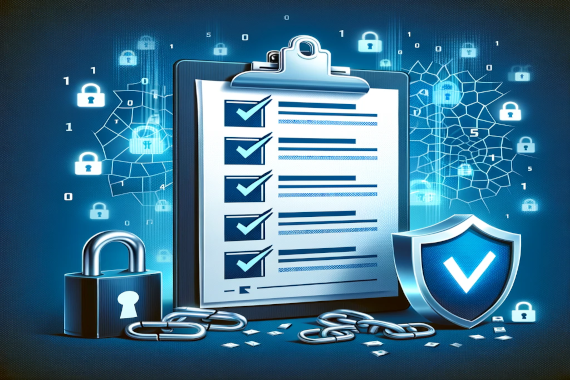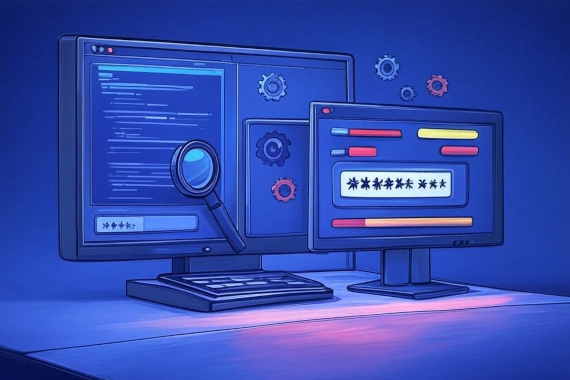
Threat Intelligence Management
Dark Web Monitoring Threat Intelligence Best Practices
What is Threat Intelligence Management? Threat intelligence management enables companies to understand their threat …

Nowadays, data breaches have become an increasingly common threat to businesses of all sizes.
In fact, for many businesses, the question isn’t whether their data will get breached; it’s a question of when.
This also means that, as a business, you need to have a cyber incident response plan ready.
In this post, you’ll discover what the response plan should contain. I’ll also give you a data breach incident response checklist to base it on.
Now, we have a lot to cover, so let’s get started.
RECOMMENDED READING: What is a Data Breach?
The term - data breach response plan - can sound scary at first. It sounds very much like those response plans you hear mentioned in catastrophic movies, doesn’t it?
Then again, it’s not far from it, either.
A data breach response plan is a comprehensive, organized plan that a business follows in the event of a data breach.
Of course, each data breach response plan is different and custom to an organization. Overall, however, the document typically defines:
I like to think of it as an incident response process manual. It’s the document you turn to if you detect (or even just suspect) a potential data security incident in your organization.
RECOMMENDED READING: How to Find Data Breaches?
It’s hard to deny this - A data breach can be devastating for a business. Countless examples confirm the staggering negative impact a data breach can have on a company.
Let me share some of this data with you:
Now, the full scope of the effect a breach might have on your business and the potential recovery will largely depend on how you respond to it.
Having a data security incident response plan ready will help you react quickly and calmly. It will also reduce the possibility of a response action causing even more damage to the company.
RECOMMENDED READING: What is the Cost of Data Breach?
There’s another way I like to think about a data breach incident response checklist: as your go-to resource or manual for every time you suspect your company might have suffered a data security incident.
In other words, it’s not a document you reach for after a data breach. It should also be a resource if you only suspect you may have detected a data breach.
RECOMMENDED READING: How to Detect a Data Breach?
For that reason, before you start outlining steps to mitigate the effects of a data breach, you should define several other aspects:
Define what constitutes a data breach for your organization. List all potential systems that, if compromised, would result in data being lost, breached, or leaked.
Typically, this list would include systems, specific applications, equipment, and data, but also people whose credentials, if leaked, could allow cybercriminals to gain access to your systems.
Perform a Threat Modelling exercise: Threat modeling is a process used to identify potential security threats, vulnerabilities, and the risks they pose to an organization. The goal is to understand the attack surface, prioritize potential threats, and implement strategies to mitigate or prevent those threats. It will show you where potential threats exist - such as employees downloading malware, falling prey to phishing attacks, or hackers penetrating your systems using stolen credentials.
TIP: Use our free dark web scanner to quickly check whether your employees’ credentials and other sensitive data haven’t been found in a recent data breach.
 (Main interface of our free dark web scanner)
(Main interface of our free dark web scanner)
List events that, if they had occurred, would immediately trigger the response plan.
And here is a list of elements your data breach response checklist should include.
This section should list all key personnel, including IT, legal, HR, PR, and executive leadership, involved in assessing and responding to the breach.
Naturally, you should treat any suspicious events or network anomalies seriously and investigate whether the event meets the criteria for a data breach that you outlined earlier.
If so, your security team should investigate the cause and scope of the breach and take immediate steps to contain it by isolating affected systems or changing access credentials.
This section should outline all the steps your incident response team would take and who would do what to conduct the investigation.
TIP: You may also need to engage an external cybersecurity expert to assist with incident response and investigation. I recommend you include a shortlist of such experts to contact in case of a data security breach.
As with any other incident, you should thoroughly document all steps taken during the response, as well as the details of the data breach, to assist with legal compliance, investigations, and potential lawsuits.
Developing a template or at least a framework for documenting the incident is also a good idea. Some of the elements on this list could include:
By law, you may be required to report the breach to relevant law enforcement agencies and regulatory bodies. Therefore, your incident response plan should list all necessary regulatory bodies you’d have to notify, their contact details, and the process for doing so.
Next may be the most challenging step when responding to a data breach. Notifying the authorities is one thing. However, telling affected customers, employees, and partners about the breach is completely different and much harder.
But you have to do it, and your response plan should include not only the list of steps you’ll take but also how you’ll reassure the affected parties after the incident.
Some ideas for that include:

Dark Web Monitoring Threat Intelligence Best Practices
What is Threat Intelligence Management? Threat intelligence management enables companies to understand their threat …

Dark Web Monitoring Threat Intelligence Best Practices
What is a Cyber Threat Monitoring Tool? A cyber threat monitoring tool alerts security teams to potential threats before …